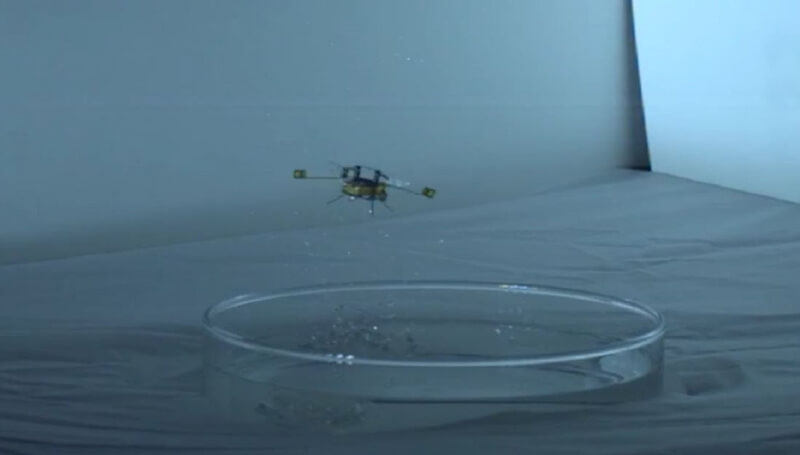Researchers from Wyss Institute created a micro-drone called RoboBee. It can fly, dive into water, swim and explode out of the water.
Search and rescue missions are about to get a whole lot more exciting. Researchers at the Wyss Institute for Biologically Inspired Engineering at Harvard University and the Harvard John A. Paulson School of Engineering and Applied Sciences (SEAS) have created the RoboBee.
The miniature drone ”RoboBee” is inspired by insects. The tiny hybrid robot certainly has the appearance of a fly, but it also has the functionality too. It can fly, dive into water, swim, launch itself out of the water, and then land again.
The researchers have developed new floating devices and an internal combustion system which ignites so that the RoboBee can propel itself out of the water.
The RoboBee also stabilizes in air meaning it can land safely. Amazingly, this design is 1,000 times lighter than any other aerial-to-aquatic robots. The researchers believe the micro-robot can be used for search and rescue missions, research studies and environmental monitoring.
“This is the first microrobot capable of repeatedly moving in and through complex environments… We designed new mechanisms that allow the vehicle to directly transition from water to air, something that is beyond what nature can achieve in the insect world,” says first author, Yufeng Chen.
Fly, Swim and Explode out of Water
The hardest part for the team was working out how to break RoboBee through the water’s surface. This was no easy feat as surface tension is 10 times the weight of the RoboBee and three times its maximum lift. Impact and sharp edges can get the RoboBee into the water, but getting out of it required some serious brain power.
Essentially, the RoboBee explodes out of the water thanks to four buoyant outriggers and a central gas collection chamber. When the RoboBee swims to the surface, it collects surrounding water in the buoyancy chamber.
An electrolytic plate in the chamber then converts water into the a combustible gas fuel, oxyhydrogen. The robot can then push its wings out of the water. A sparker then ignites the oxyhydrogen and the robot can leap off the surface of the water.
“Because the RoboBee has a limited payload capacity, it cannot carry its own fuel, so we had to come up with a creative solution to exploit resources from the environment… Surface tension is something that we have to overcome to get out of the water, but is also a tool that we can utilize during the gas collection process,” says Elizabeth Farrell Helbling, graduate student in the Microrobotics Lab and co-author of the paper.
The team hopes that their work can inspire researchers to create more multi-functional microrobots. You can read more about the research in Science Robotics.
Source: Wyss Institute

License: The text of "Insect-inspired Hybrid Drone Flies, Swims and Explodes Out of the Water" by All3DP is licensed under a Creative Commons Attribution 4.0 International License.